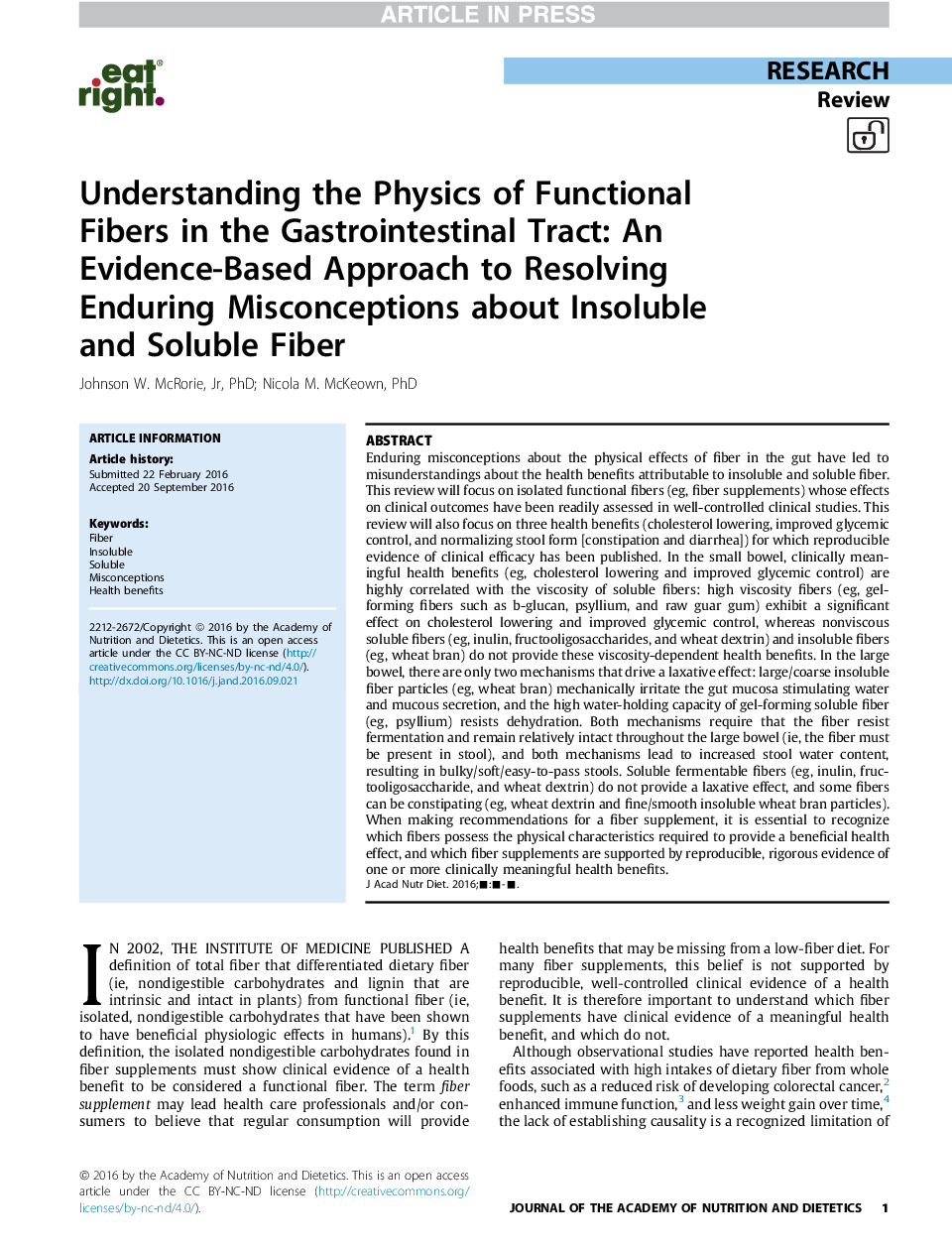Enduring misconceptions about the physical effects of fiber in the gut have led to misunderstandings about the health benefits attributable to insoluble and soluble fiber. This review will focus on isolated functional fibers (eg, fiber supplements) whose effects on clinical outcomes have been readily assessed in well-controlled clinical studies. This review will also focus on three health benefits (cholesterol lowering, improved glycemic control, and normalizing stool form [constipation and diarrhea]) for which reproducible evidence of clinical efficacy has been published. In the small bowel, clinically meaningful health benefits (eg, cholesterol lowering and improved glycemic control) are highly correlated with the viscosity of soluble fibers: high viscosity fibers (eg, gel-forming fibers such as b-glucan, psyllium, and raw guar gum) exhibit a significant effect on cholesterol lowering and improved glycemic control, whereas nonviscous soluble fibers (eg, inulin, fructooligosaccharides, and wheat dextrin) and insoluble fibers (eg, wheat bran) do not provide these viscosity-dependent health benefits. In the large bowel, there are only two mechanisms that drive a laxative effect: large/coarse insoluble fiber particles (eg, wheat bran) mechanically irritate the gut mucosa stimulating water and mucous secretion, and the high water-holding capacity of gel-forming soluble fiber (eg, psyllium) resists dehydration. Both mechanisms require that the fiber resist fermentation and remain relatively intact throughout the large bowel (ie, the fiber must be present in stool), and both mechanisms lead to increased stool water content, resulting in bulky/soft/easy-to-pass stools. Soluble fermentable fibers (eg, inulin, fructooligosaccharide, and wheat dextrin) do not provide a laxative effect, and some fibers can be constipating (eg, wheat dextrin and fine/smooth insoluble wheat bran particles). When making recommendations for a fiber supplement, it is essential to recognize which fibers possess the physical characteristics required to provide a beneficial health effect, and which fiber supplements are supported by reproducible, rigorous evidence of one or more clinically meaningful health benefits.


